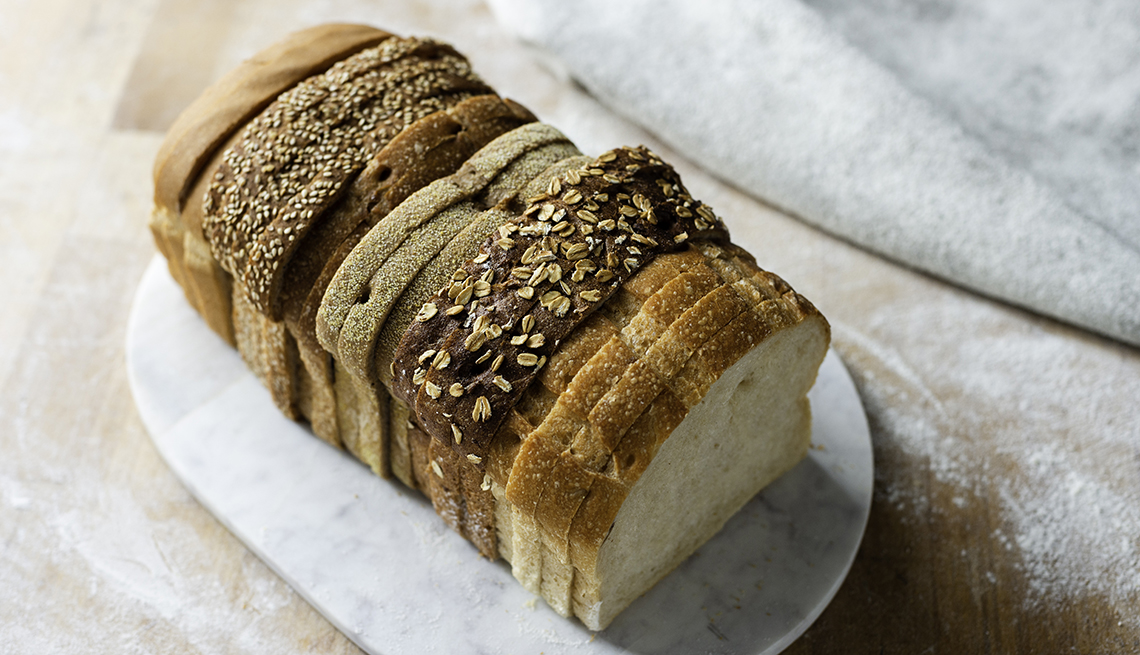Play all audios:
3. DON’T ASSUME GLUTEN-FREE IS BETTER FOR YOU If you haven’t been diagnosed with celiac disease or don’t have an intolerance to wheat, there’s no need to seek out gluten-free breads. These
are no better for you than wheat-based kinds, but they tend to be pricier. Many gluten-free breads can be higher in carbs and and are likely to be lower in protein than standard breads,
due to ingredients like white rice flour and tapioca starch. Plus, they won’t hold up as well in a sandwich. “Gluten-free breads tend to not have as strong and firm of a texture,”
Lendway says. If you need a gluten-free bread for health reasons, however, don’t despair. There are healthier options made from whole grains like buckwheat, sorghum and other flours. 4.
DO BE OPEN TO ALTERNATIVE GRAINS These days there are many more options than just white or wheat. “We are seeing a variety of other whole grains being incorporated into bread and flour,”
Lendway observes. Dave’s Killer Bread 21 Whole Grains and Seeds, for instance, uses spelt, millet and barley, among others; Pepperidge Farm’s Whole Grain 15-Grain adds wheat berries and
oats. Check the labels to see how they add up nutrition-wise. Although there are no guarantees, breads that include grains beyond wheat may be an easy way to add some fiber and variety to
your diet. As far as taste, alternative whole grains generally add a nutty flavor, similar to whole wheat. 5. DON’T LIVE ON BREAD ALONE Along with choosing healthier bread, you can boost
the nutrition of every sandwich by adding more fruits and vegetables to the mix, Salge Blake suggests. For breakfast, top toasted whole-grain bread with peanut butter and sliced
strawberries. For lunch, pile lettuce, tomato, sliced cucumbers and shredded carrots, along with the usual sliced turkey and mustard, between two thin slices of sourdough. You can also go
with an open-faced sandwich, such as one toasted slice of bread topped with avocado or roasted veggies and melted cheese. Or have half of a sandwich alongside soup or salad, Lendway
recommends. Not only will you cut back on carbs, but you’ll also diversify the range of nutrients you’re taking in. 6. DO BE MINDFUL OF SERVING SIZES Like so many other foods, serving sizes
of breads have increased in recent years. If you’re monitoring your carb intake or looking to lose weight, stick with a brand that offers a smaller serving size — less than 28 grams per
slice, Lendway says. A good rule of thumb to find the right size is to look for a bread that is around 70 to 80 calories per slice, Salge Blake says. How to Make a Sourdough Starter

